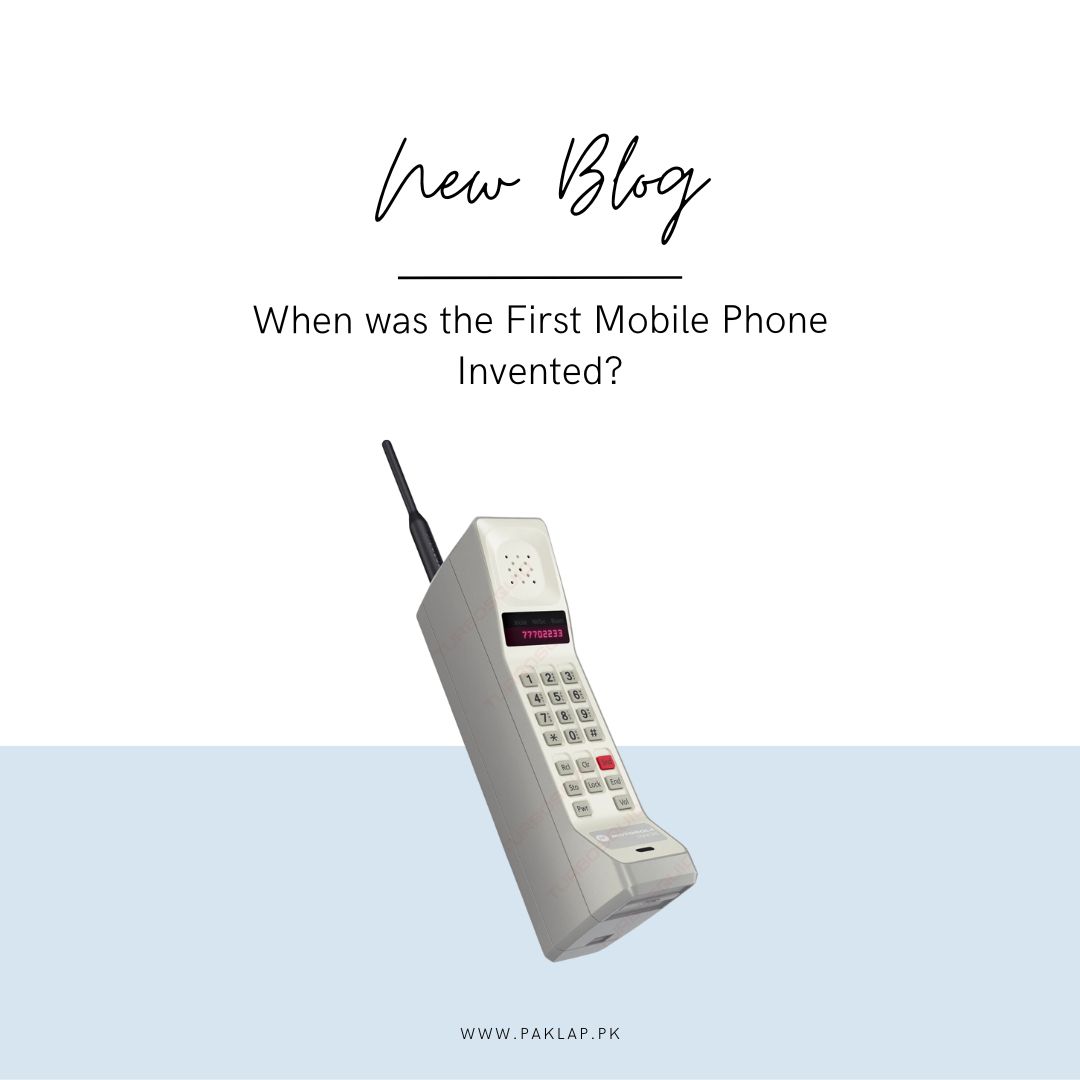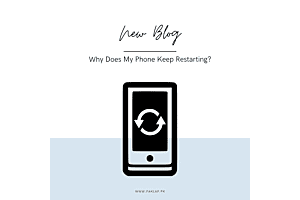When was the First Mobile Phone Invented?

Before the era of mobile phones, life had a different rhythm and flavor. Communication was a slower, more deliberate affair. People relied on landlines, letters, and face-to-face conversations to connect. There was a tangible sense of anticipation and excitement when waiting for a letter from a friend or a loved one, as it brought a personal touch that today's instant messaging can't quite capture.
Planning meetups required careful coordination and punctuality. If you agreed to meet someone at a certain time and place, you had to be there, as there was no way to send a quick text saying you were running late. This created a stronger sense of commitment and reliability in relationships.
The absence of phones also meant more privacy. When you left your home, you were truly disconnected from the rest of the world. There were no constant notifications or the pressure to be reachable at all times. This allowed people to immerse themselves fully in their surroundings and conversations without the distraction of a buzzing device.
Photography was a more intentional art. Without the convenience of a camera in our pockets, people had to carry dedicated cameras and film. Each photo captured was a carefully considered moment, as opposed to the rapid-fire snapshots we take today. Looking through old photo albums evoked a sense of nostalgia, each picture holding a story and a memory.
Navigation required maps and asking for directions, fostering a greater sense of interaction with the community. Getting lost was a common adventure, leading to unexpected discoveries and interactions. Life before these devices was a bit slower, and a tad more deliberate, but filled with genuine connections and a unique charm that today's fast-paced digital age may struggle to replicate.
The Story of the First Phone
Let's travel back to the late 1800s when Alexander Graham Bell crafted something truly remarkable – the first telephone. It was March of 1876 when he secured a patent for his invention, giving birth to what we now know as the world of phonics. Little did Bell know; he was laying the foundation for a technological marvel that would reshape how we connect and communicate.
In those early days, when Bell looked at his invention, he saw more than just a gadget. He envisioned a tool that could potentially change the lives of everyone who encountered it. The telephone, as he named it, helped in creating the promise of a new era in communication.
However, the initial reception from the public was rather lukewarm. People didn't immediately grasp the significance of Bell's creation. They didn't find it captivating or particularly useful. It seemed like an ordinary invention that might not make waves in the world.
Yet, time had a way of revealing the true potential of Bell's brainchild. As days turned into years, people began to understand the profound impact of this invention.
This invention wasn't just about wires and circuits; it symbolized the motivation to bring people closer, fostering connections that would reshape the way we live and communicate. Like a beacon lighting the way, it inspired a collective effort to build a world where communication transcends boundaries and brings us all together.
Bell's invention became the driving force behind a transformation in communication. From those humble beginnings, it eventually paved the way for the establishment of the BellSouth company. This company became a key player in introducing landlines, those familiar cords connecting households.
As time marched on and technology continued to advance, it became a key player in bringing forth the era of cellular towers. These towers now stand like silent sentinels across our landscapes, serving as the unsung heroes that make wireless communication possible. Thanks to these towering structures, we can now connect with others seamlessly, wirelessly, and without the constraints of cords or boundaries. It's almost like these towers are invisible bridges that allow our voices to travel through the air, uniting us in conversations that span across distances, making the world feel a bit smaller and much more interconnected.
Looking back, it's awe-inspiring to think about how an invention initially perceived as uninteresting turned out to be the cornerstone of our modern communication landscape. Bell's invention wasn't just a piece of technology; it was a gateway to a world where distance no longer defined our connections.
So, the next time you pick up your cell or hear the familiar ring of a landline, remember the journey that began with Alexander Graham Bell's vision. What might have seemed like a simple invention back then has woven itself into the very fabric of our daily lives, reminding us that even the most unassuming ideas can evolve into something truly extraordinary.
When Was the First Mobile Invented?
A guy named Martin Cooper worked at Motorola in the early 1970s. He was on a mission to make something big in the world of phones, and guess what? He did it! Martin Cooper created something super important – the first-ever mobile phone call. It was a huge deal because no one had done it before.
Martin had been working hard on this project for years. Finally, on October 17, 1973, he made history. He introduced the Radio Telephone System, a cool new way to use phones on the go. The star of the show was the DynaTAC 8000X.
Martin was in New York City, a busy place with lots of people and big buildings. Right there on the street, he made the very first call with the DynaTAC 8000X. It wasn't just any call – he dialed Joel Engel, a smart guy from a different company called AT&T. Joel was like Martin's friendly rival in the tech world.
This special call wasn't just about talking on the device. It was a big moment that changed everything. The DynaTAC 8000X became more than just a phone; it became a way for people to connect and talk to each other no matter where they were.
The story of Martin Cooper is more than just inventing a cool gadget. It's about a guy who worked hard to make something amazing. Martin's call to Joel wasn't just a call; it was like saying, "Hey, we did it!" It showed that people could make incredible things if they tried, and it started a whole new way of using these devices that we still use today. So, thanks to Martin Cooper, these became more than just devices – Mobiles became a way for all of us to stay connected.
Dyna 8000x
Let's take a closer look at the DynaTAC 8000X, the first-ever mobile. This early model was quite different from the sleek and slim cells we're used to today. It weighed 1.1 kg and had dimensions of 33 x 4.5 x 8.9 – pretty thick compared to modern ones. Imagine carrying around something bulkier than what we have now! Despite its hefty appearance, it was a game-changer because, for the first time, people could make calls without being tied to a landline.
Now, here's the catch – the DynaTAC 8000X had some limitations. It offered only 30 minutes of talk time, and to get it working properly, you had to charge it for a whopping 10 hours. It hit the market on March 13, 1983, with a price tag of USD 3,995. That was quite a hefty price, especially compared to what we pay today.
Surprisingly, despite its chunky build and limited features, the DynaTAC 8000X became quite popular. Within a year of its launch, nearly 300,000 people worldwide owned one. It marked the beginning of a new era in communication and also helped in setting up the stage for the advanced cell phones we have today.
Fast forward to today, and we have come a long way. Technological advancements, especially in telecommunications like the super-fast 5G mobile network, have transformed mobiles into the smart devices we use now. Unlike the early days when the mobile was mainly for calls, today's cells are like mini-computers in our pockets.
Think about it – with a single device, you can do so much more than just make calls. You can browse the Internet, play video games, meet new people, capture moments with a camera, use it as a calculator or diary, watch your favorite films, have an up-to-date map, get directions, attend a quality medical appointment, and even take your work with you wherever you go.
The evolution from the DynaTAC 8000X to today's devices is truly remarkable.
Evolution of Mobiles
How did mobiles change over time? Well, in the 1990s, they started getting popular. In 1990, around 11 million people used mobiles. But today, there are more than 5 billion people using mobiles worldwide – that's 68% of everyone in the world! According to a report by Data Eportal, partnered with We Are Social and Hootsuite, people spend about 30% of their waking time using these devices.
After Motorola's success with the first mobile, other companies joined in. Nokia made the Mobira Cityman in 1987, and it was way lighter than the first one. Then, Samsung came in with its SH-100 in 1988, and even though it didn't sell well, it set the stage for the future.
As time passed, mobiles got fancier. On December 3, 1992, something big happened – the first text message was sent! A person at Vodafone sent a simple "Merry Christmas" to the company director during a holiday party. That was a game-changer.
In Spain, around the same time, mobiles became a big hit. By the end of 1995, when Movistar started, there were nearly a million customers, which was 125% more than the year before. That's when mobile phones started becoming something people use every day. They went from being a cool gadget to being a regular part of our lives.
The Smartphone Era
The first-ever smartphone came into the picture after the cordless device. It was in 1994 when the IBM Simon, the initial mobile with applications and a touch screen, was created. Even though it didn't become super popular, it was a significant step. After that, slider phones, like the Motorola StarTAC, made an appearance, and they introduced a cool feature – vibration.
Once vibration became a thing, phones started getting QWERTY keyboards. In 1996, the Nokia Communicator 9000 hit the market, becoming the first cell with a keyboard. It wasn't just a regular keyboard; it also had business-related functions like email, fax, and word processing. Then, in 1998, the Siemens S10 came around, boasting the first-ever color screen.
As we entered the new millennium, phones started changing their looks. They became smaller and lighter, and one cell, in particular, stole the show – the Nokia 3310. This one is like a legend because of its crazy-long battery life. You could talk about it all day or just leave it without charging for a whole month! People loved it, and Nokia sold more than 126 million of them. The Nokia 3310 became the icon of mobiles and left a mark in the history of technology.
End Note
So, back in the day before our trusty mobile phones, life was a bit slower. Imagine waiting for letters from friends and having face-to-face chats – no quick texts or notifications. It was a different, more deliberate kind of connection.
Then, we hopped into Alexander Graham Bell's shoes. He wasn't just an inventor; he was someone with a bright idea that turned into the first telephone. Bell's story is like a friendly reminder that even the simplest ideas can change everything.
Now, let's chat about the DynaTAC 8000X and Martin Cooper's historic call. Martin wasn't just a tech whiz; he was a regular person excited about making the first mobile phone call. The DynaTAC 8000X? Well, it might have been a bit chunky, but it was the beginning of something big.
Talking about the DynaTAC, it's like thinking about your old gadgets. Remember the first mobile phones with their funny shapes and sizes? They paved the way for our sleek smartphones today. It's not just about gadgets evolving; it's about us adapting and making things more convenient.
And oh, the journey from the '90s to today – from not many people using phones to everyone having one. Smartphones aren't just fancy gadgets; they've become a part of our lives, changing the way we do things.
This journey has been like flipping through an album of progress and connection. Behind every cool gadget, there's a story of someone trying to make things better and bring us all a little closer. It's pretty neat, isn't it?





